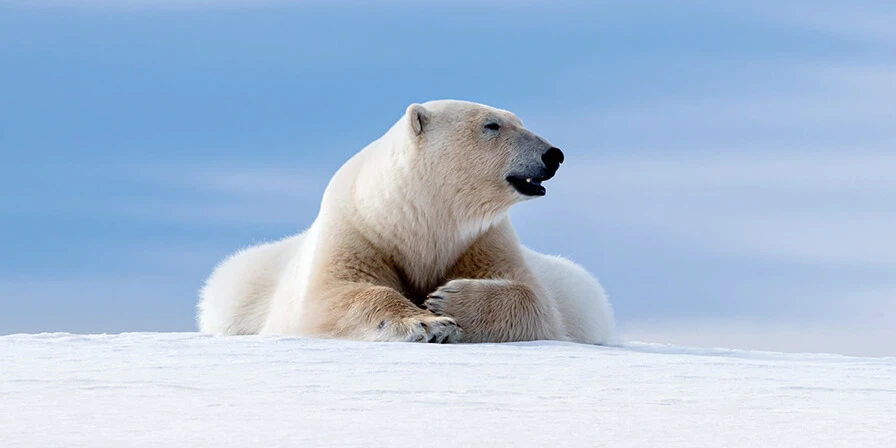World Wildlife Day and the biggest threat facing one species

We’re all too well aware of the threat that wildlife faces and how vital ecosystems are being destroyed, and so, now more than ever it’s important to do all we can to help protect wild animals and plants, and their habitats, otherwise we all face devastating consequences. Read on to find out about the importance of World Wildlife Day and the biggest threat that one species in particular is facing.
what is World Wildlife Day?
UN World Wildlife Day - the most important global annual event - celebrates and raises awareness of the world’s wild animals and plants, and this year it falls on March 3rd. The theme for World Wildlife Day 2022 focuses on recovering key species for ecosystem restoration, and aims to draw attention to the conservation status of some of the most critically endangered species of wild fauna and flora.
According to data from the International Union for Conservation of Nature Red List of Threatened Species, a staggering 8.400 species are critically endangered and close to 30,000 more are endangered or vulnerable. Furthermore, it is suggested that over a million species are threatened with extinction.
A continued loss of species, habitats and ecosystems also threatens all life on earth, and people everywhere are reliant upon wildlife and biodiversity-based resources to meet their needs, including food, medicines, fuel, clothes and housing. Millions of people also rely upon nature as the source of their livelihoods, as well as economic opportunities. So, this year, World Wildlife Day aims to drive the debate towards the need to reverse the fate of the most critically endangered species by supporting the restoration of their habitats and ecosystems, and promoting a more sustainable future with a goal of living in harmony with nature.
So, you may be thinking how you can do your bit to help support World Wildlife Day 2022. One thing you could do is to get to know the species that face an urgent threat around the area you live, and how you and the community could help conserve them. And of course you can help spread the word on social media by using the hashtags #WWD2022, #RecoverKeySpecies and #worldwildlifeday
the importance of World Wildlife Day
We all have a moral obligation to do all we can to protect the earth and humanity is dependent upon the essential products and services that nature provides, such as food, freshwater, pollution control and carbon storage. Wildlife is in serious and immediate danger, with a quarter of species facing a threat of extinction, which is largely due to the destruction of almost half of ecosystems, and so it’s vital that we take action to help reverse this trend. The rapid melting of the polar ice caps, caused by climate change, is just one example of how an ecosystem is being destroyed. Polar bears help to balance biological populations and are critical to a functioning ecosystem, and without a solid ice platform to hunt, their future hangs in the balance.
what is International Polar Bear Day?
International Polar Bear Day focuses on the need to protect denning polar bear families across the Arctic, and this year it falls on February 27th, which coincides when female polar bears and their cubs are snug in their dens. The main focus for International Polar Bear Day 2022 is to raise funds to help continue the development of a new tool, which aims to find and map den locations, ensuring female polar bears and their cubs aren’t disturbed. Denning is the most vulnerable time in a polar bear’s life, and in a warming Arctic, they face huge challenges, and the survival of every cub is more important than ever. So, by protecting dens, it helps to protect cubs and ensures their future.
why are polar bears so important?
Polar bears have a strong cultural significance for Arctic people and further beyond too. They are top predators in their food web, and play a crucially important part in the balance of their ecosystem. The Arctic provides fish for millions of people, including here in the UK, and by helping to protect polar bears, it means we’re helping to ensure the food chain remains healthy for the benefit of both wildlife and people.
the challenges that polar bears face
Global warming is the biggest threat that polar bears face, and making sure they’re protected, while addressing climate change, is critical work. The Arctic is warming twice as fast as the global average, which is causing the ice that polar bears depend on to melt away. This loss of sea ice is also threatening their main prey, seals, as they need the ice to raise their young. In parts of the Arctic, longer periods of ice-free seasons and fasting have led to a decline in some polar bear populations and without action to significantly reduce carbon emissions, all but a few polar bear populations could be lost by the end of the century. A loss of sea ice also means that polar bears are forced to stay longer on land, bringing them into contact with people and leading to people being injured or killed.
It’s not just global warming that’s threatening polar bears, commercial activity such as oil and gas exploration increases the risk of spills and the disturbance of denning female polar bears and their cubs. Pollution is another major challenge facing polar bears too, with some parts of the Arctic containing a high amount of toxic chemicals. These pollutants are carried by the wind and ocean currents, where they concentrate and make their way up the food chain, meaning when polar bears eat fish and seals, they absorb these high levels of toxins, which leads to long-term damage. So, given the huge threats this species is facing, it will take a huge managed effort combined with aggressive action on climate change to ensure polar bears have a future.
our mission to have a positive impact on the environment
At Silentnight, we’re committed to making our impact on the environment a positive one. From zero waste going to landfill, to the re-use of ocean-bound plastics in our eco comfort fibres and our pledge to net-zero carbon emissions by 2040, we’re helping our customers contribute to positive environmental change.
























